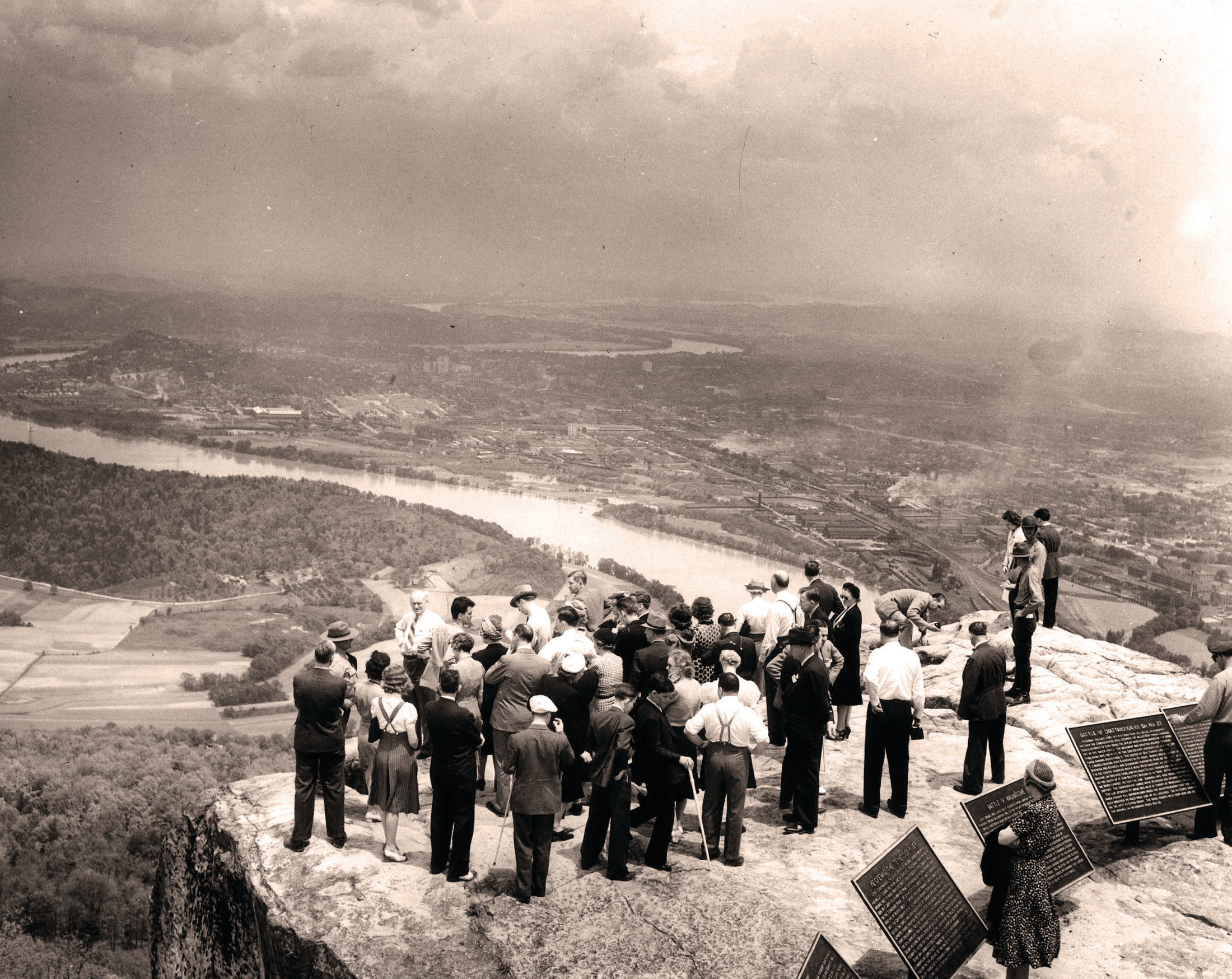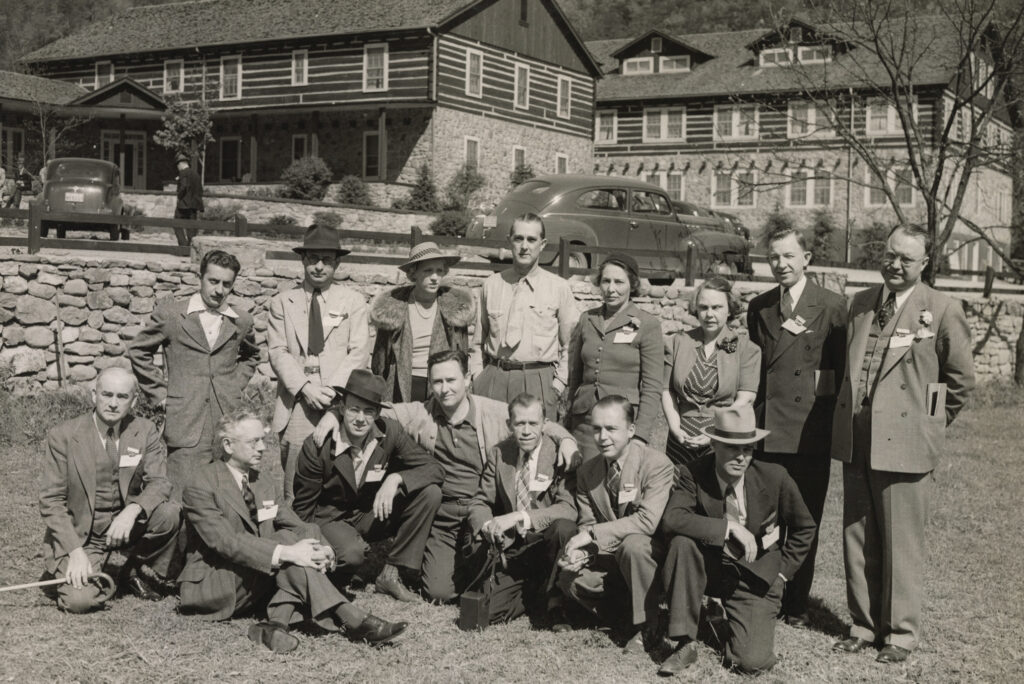Newspaper reporters used to shape public opinion. Gatlinburg used to be a little-known tourist destination. Men used to wear coats and ties, even while sightseeing.
I recently researched a photograph that brought these three statements to light.
It started a few months ago when I discovered a photo in the Tennessee State Library and Archives collection. The image shows 15 people, with the following description:
“Members of the See Tennessee Tour — newspaper men and women, posed at Gatlinburg. May 12, 1940.”
Neither the people nor their exact location were identified, but I immediately recognized its setting and one of the people in it. The reporters were standing in front of the Gatlinburg Inn, which is still open today. Percy Priest — for whom there is a U.S. Army Corps of Engineers dam and lake named today — is crouched, fifth from the left on the bottom row.
“If Percy Priest is unidentified, who were these other reporters?” I thought.
There were other things about the photo that aroused my attention. One is that Gatlinburg was still a rural town, unknown to most Tennessee residents, in 1940.
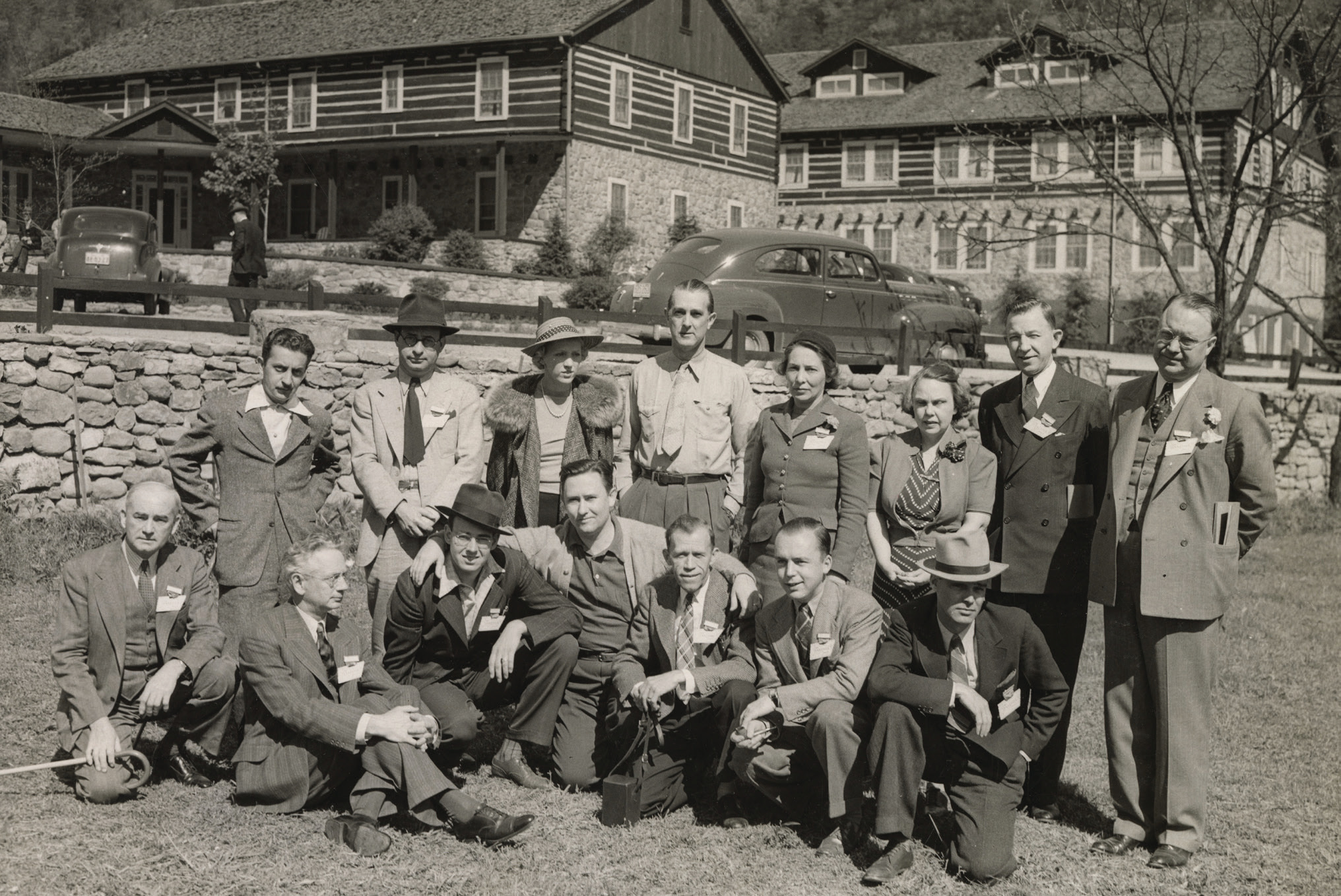
The other thing was the world situation at the time. The U.S. was about to change dramatically with its entry into World War II in 1941. Obviously, I thought, the reporters in this photo would change with it.
I have since researched the photo at length, and I think I’ve identified all the people in it. But before I go over who I think everyone was and what happened to them, I’d like to answer two questions.
What was “See Tennessee”?
To generate publicity, the Tennessee Department of Conservation organized and funded weeklong tours for travel writers. The first of these junkets, called “See Tennessee,” occurred in 1940.
About two dozen reporters took part in the first event. It included stops at Beale Street, Reelfoot Lake, Shiloh, Pickwick Dam, The Hermitage, the Parthenon, Norris Lake, Lookout Mountain and other attractions. The group was greeted by a large crowd in Tullahoma and by parades in Humboldt and Columbia. Reporters met dignitaries along the way, including Gov. Prentice Cooper. And, sure enough, the junket resulted in articles in publications ranging from the Chicago Sun Times to National Geographic.
Secondly, why were there no Black reporters on the trip?
In 1940, there were no African-American reporters at Tennessee newspapers such as the Commercial Appeal, News Sentinel and Tennessean. There were Black-owned newspapers, such as the Nashville Globe. However, the Department of Conservation would not have invited Black reporters on the junket because the reporters stayed in hotels and ate in restaurants at a time when interracial accommodations were illegal in Tennessee.
Here is what I believe to be the identities of everyone pictured:
Front row:
Samuel Head (1885-1946) was a reporter in Buffalo who covered the assassination of President William McKinley in 1901 and the sinking of the Titanic in 1912. When this photo was taken, he was an editor at the Buffalo News.
Garth Cate (1883-1974) worked for the New York World Telegram from 1936 to 1942 and later was travel editor for the Scripps Howard newspaper chain. A 1970 profile in the Asheville Citizen Times said he was friends with Henry Ford, Carl Sandburg and Margaret Sanger. Cate took up the causes of civil rights and environmentalism “before they became public matters.” Cate retired to the North Carolina mountains and lived to be 91.
Rufus Terral of the Chattanooga Times wrote several complimentary stories about the Tennessee Valley Authority during the “See Tennessee” junket. Not long after that, he got a job with TVA and stayed there for three years, then went back to journalism. In 1947, Terral wrote a book that advocated a TVA-type program for the Missouri River (which never came to fruition). He remained with the St. Louis Post-Dispatch until his death in 1979.
James Sachs (1907-1971) is the only man who never wore a coat and tie on the junket. Sachs was the publisher of the Nashville Times, a short-lived publication that existed from 1937 until 1940. During World War II, he held various positions in the Office of War Information. A resident of New York for most of his life, he was one of the original stockholders of Newsweek magazine in 1932 and American Heritage magazine in 1954.
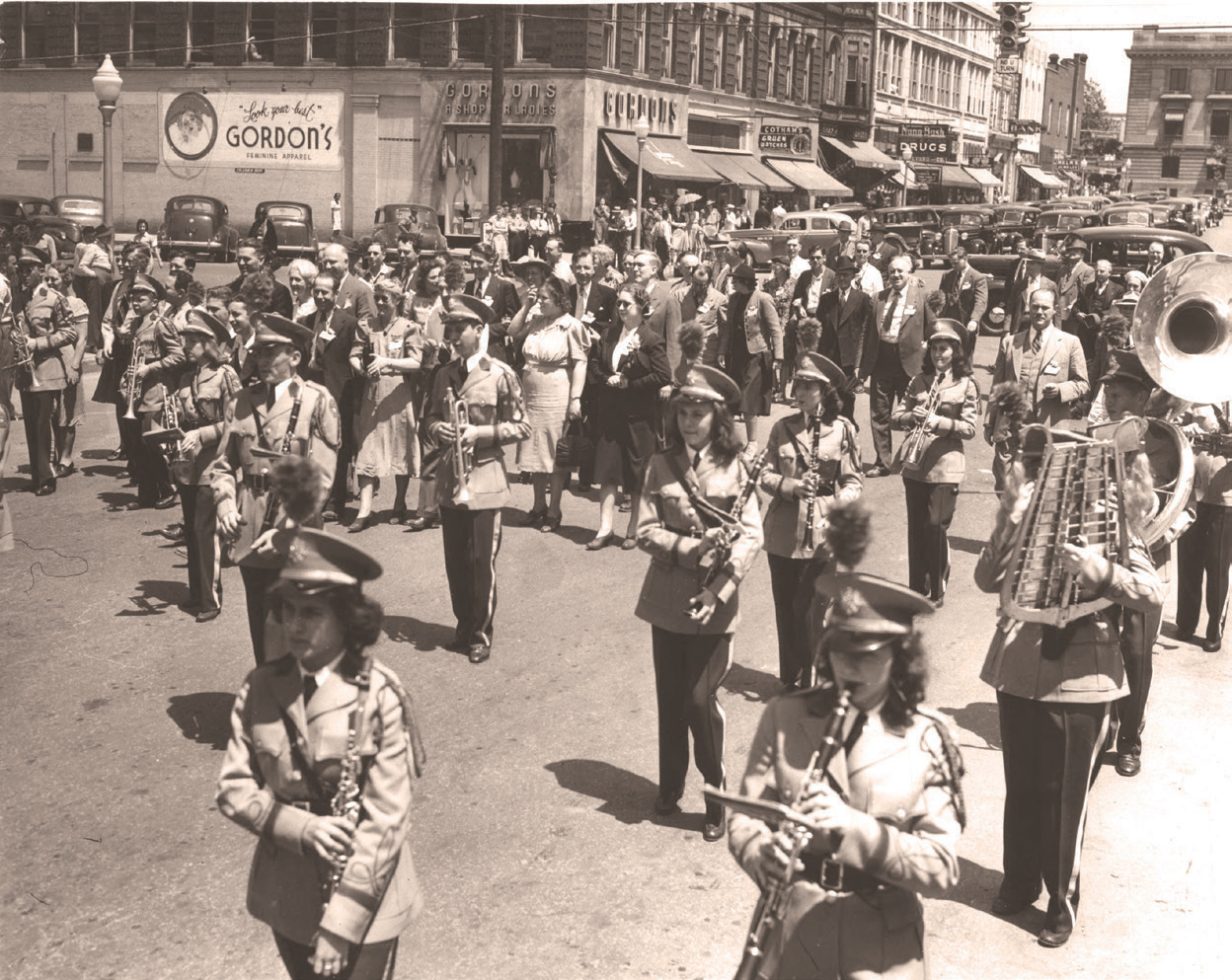
Percy Priest (1900-1956) was probably the most popular newspaper reporter in the state when this photo was taken. Priest’s job was to write articles for the Nashville Tennessean about matters of human interest in small towns. Only four months after this trip to Gatlinburg, Priest resigned from the paper to run (as an independent) against Rep. Joe Byrns Jr., a Democrat who was heavily criticized for not supporting the nation’s first peacetime draft. Priest won and remained in Congress until he died in October 1956. He was one of the few Southern House members who refused to sign the pro-segregation “Southern Manifesto” of 1956.
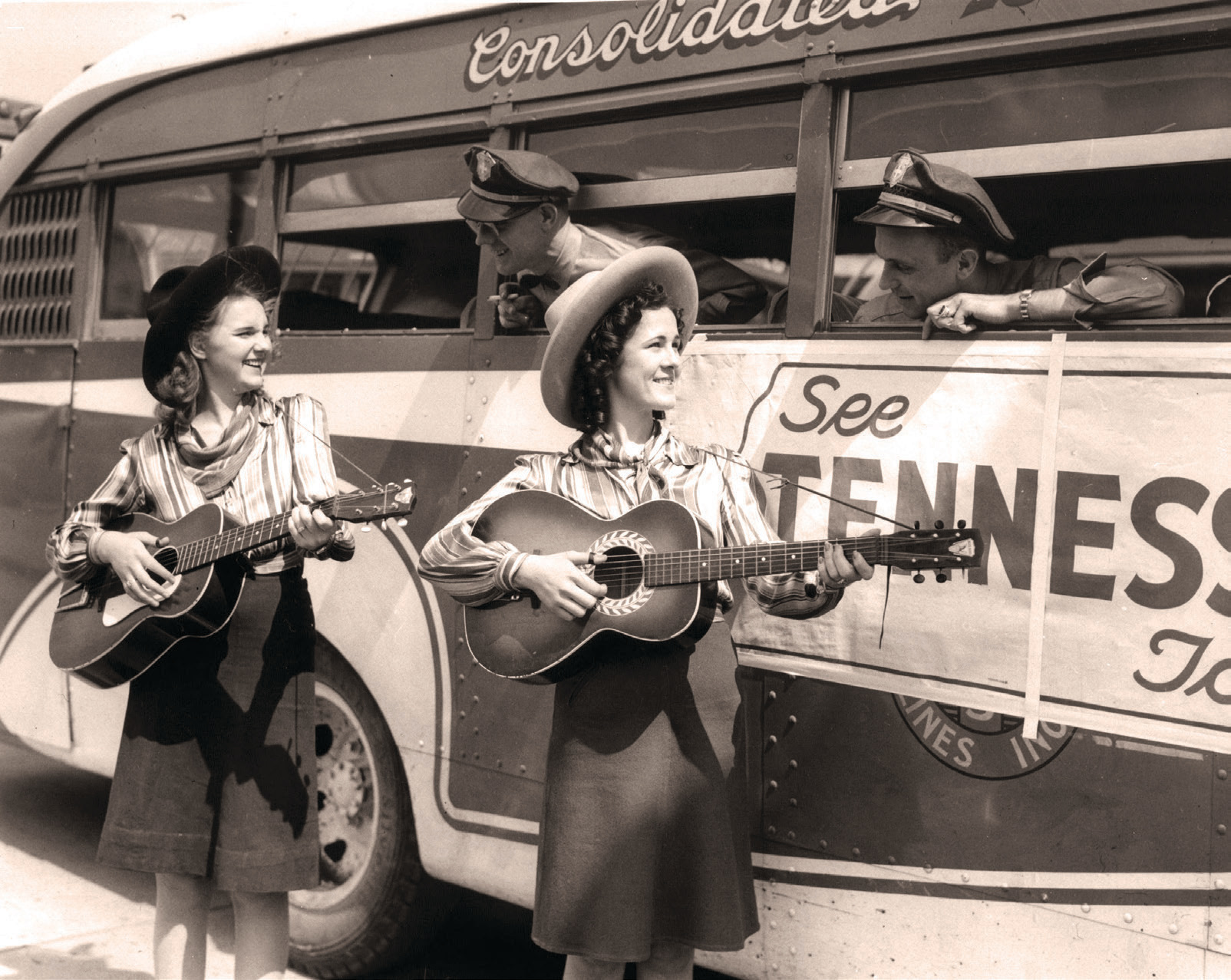
Robert Brown (1900-1944) was editor of the Columbus (Ohio) Citizen. A few months after this photo was taken, Brown joined the U.S. Army public relations department. He was killed in a plane crash in the South Pacific in 1944. Because of connections he made on the trip through Tennessee, the Knoxville News-Sentinel published a posthumous tribute to “Bob Brown, fine newspaperman and good friend.”
Stoddard White (1913-1972) worked for the Detroit News his entire career, other than a short interruption to work for Stars and Stripes during World War II. White later became marine editor of the Detroit News, so his specialty was ships and commerce on the Great Lakes.
Back row:
Paul Morris (1909-1977) worked with the Memphis Commercial Appeal during World War II, then, in 1946, moved to St. Louis do public relations for the St Louis-San Francisco Railway. Morris started his own PR firm in 1958.
Eldon Roark (1898-1979) was a columnist for the Memphis Press-Scimitar for 46 years, from 1933 until his death. He wrote columns about oddities, funny anecdotes, things he’d heard and stories from small towns. His column, called “Strolling,” started when his editor saw him half asleep in his chair and said, “If you haven’t anything else to do, suppose you go out and take a stroll.” When Roark died in 1979, his death was announced in a long story that began on the top of the front page of the Press-Scimitar.
Nancy Ford (1904-1976) was travel editor of the Chicago Journal of Commerce when the photo was taken. She later became the Midwest transportation editor for the Wall Street Journal, then a special features editor for Modern Railroads magazine. “Women journalists are a common sight these days,” the Chicago Daily Herald reported in 1975, “but Ford remembers the time when she was one of the few female reporters who did not write weddings or recipes.”
Fred Burns (1889-1971) was the travel editor for the Cincinnati Times Star, a publication that closed in 1958. When Burns died in 1971, his Cincinnati Enquirer obituary said he had been a journalist in that city from 1911 to 1958. “He was probably best known for his work as travel editor, covering not only all of the United States, but Canada, Mexico, the Caribbean, South America and the principal parts of England, France and Spain.”
Lucia Lewis was one of America’s best known travel writers in the decades after World War II, penning articles about locations such as Hawaii, Scotland and Greece that were published in the Chicago Sun-Times, Miami Herald and other newspapers. However, when she died in March 1975, her obituary didn’t mention her journalism career.
Nellie Kenyon (1898-1982) is the subject of a 2022 book by Tyler Boyd called “Nellie Kenyon: Trailblazing Tennessee Journalist.” When this photo was taken, she worked for the Chattanooga Times Free Press, but she got hired at the Tennessean only a few months later. Kenyon covered the Scopes Trial in 1925 and the Jimmy Hoffa Trial in 1964. She outlived everyone else in the photo.
I believe that the next man in the photo is Reuben Markham (1887-1949), but his grandson Ted Van Dyke disagrees with me. (There were people on the junket who weren’t in this photograph). In any case, Reuben Markham was considered the most important reporter on “See Tennessee.” In the 1930s, he lived in Europe and wrote for the Christian Science Monitor, covering the rise of fascist regimes in Germany and Italy. When World War II broke out, the Monitor sent Markham around the U.S. to write about American public opinion (which is what led him to go on the Tennessee junket). In early 1941, he wrote “The Wave of the Past,” a book that argued for American involvement in World War II. After the war, the Monitor sent him to Eastern Europe where he exposed Soviet totalitarianism. His articles might have had a key role in leading to the Marshall Plan.
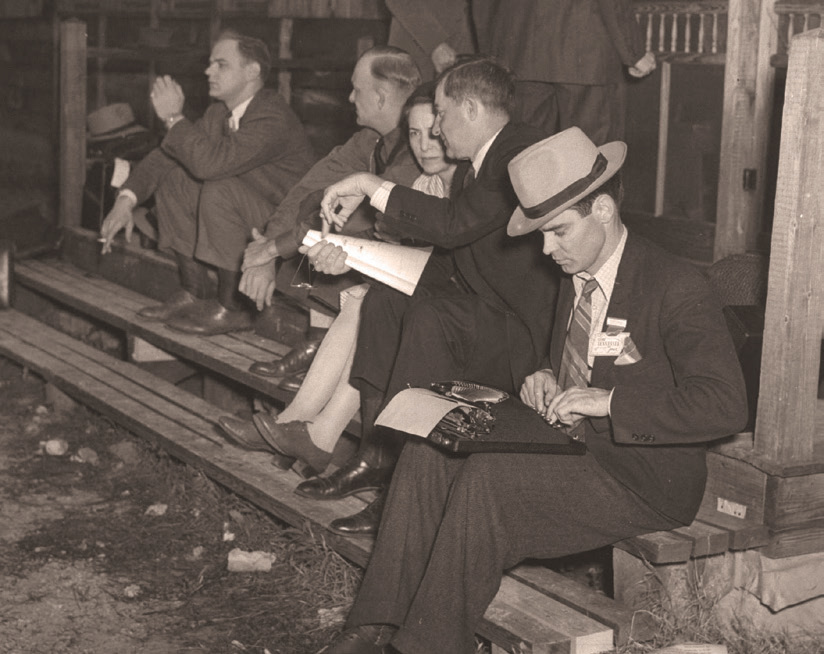
Albert Hera (1885-1953). On one of his columns about the junket, Marshall Morgan of the Nashville Banner had this to say: “The dean of the newspaper folk who are telling this odyssey to the world, huge and ruddy-faced, R.E. Hera, who has been with the Philadelphia Record since 1902, is one of the group’s finest humorists. In addition he has an appetite that shames the combined appetites of several petit females who are braving the trip.”
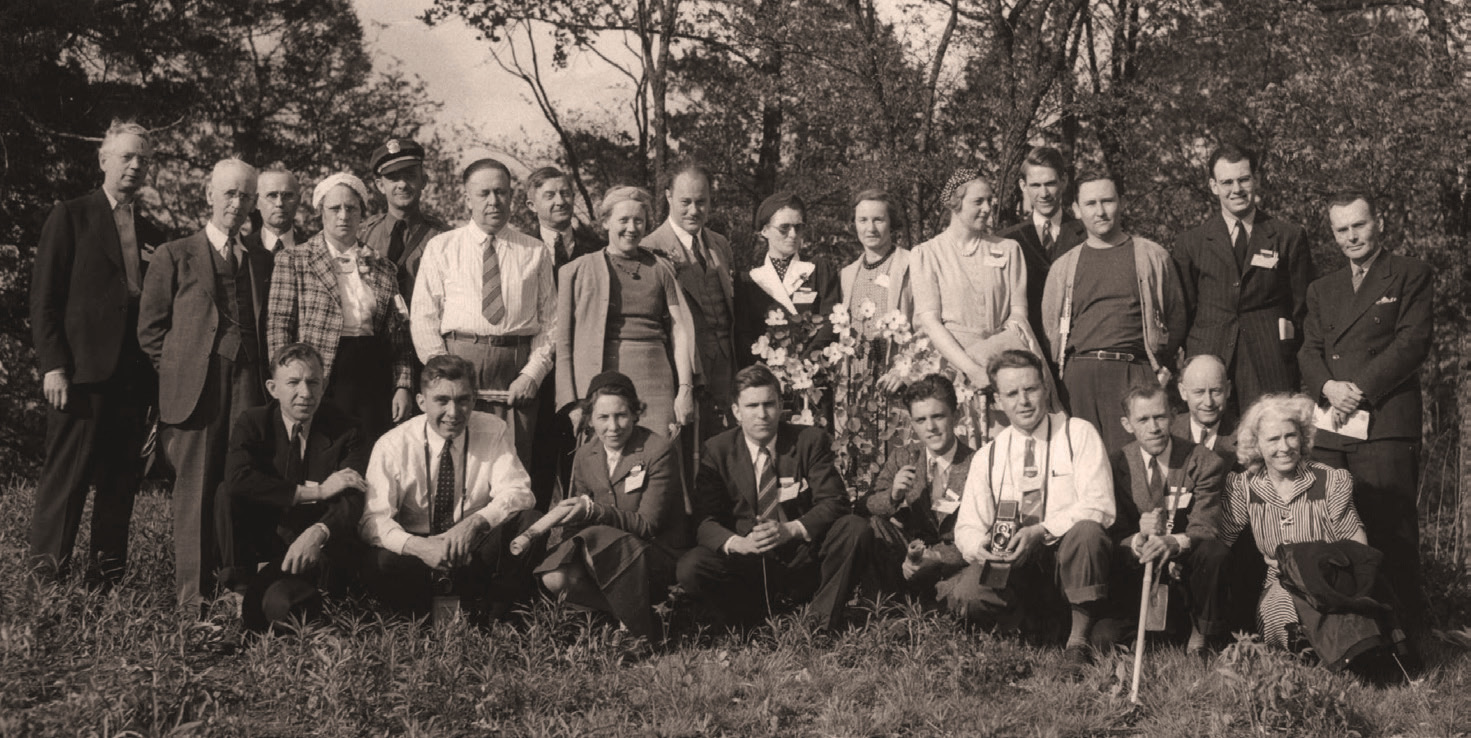
Finally, this admission: I did my best to identify everyone accurately. But it is not easy to recognize everyone in an 84-year-old photo. So it is possible that I’ve identified someone wrong.
Also, there are reporters who took part in the junket who aren’t in this photo (at least I don’t think they are), including Morgan, Leonard Roy of National Geographic and Bert Vincent of the Knoxville News Sentinel, among others.
